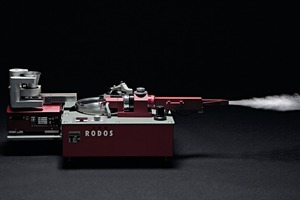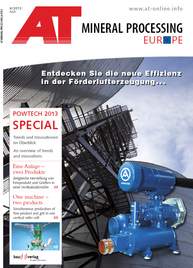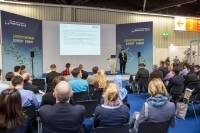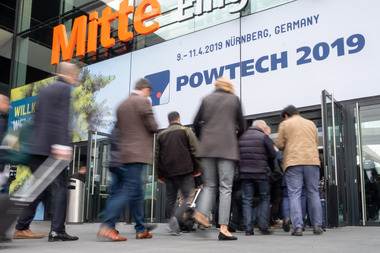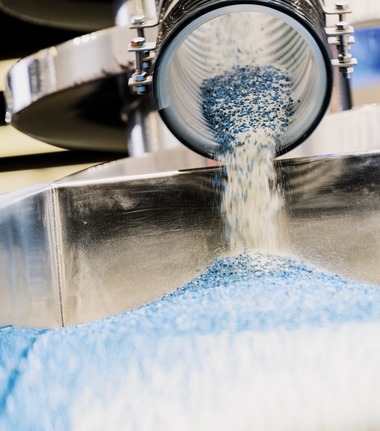Sympatec GmbH
On the occasion of POWTECH 2013 Sympatec looks back on 30 years of exhibition participation. After initial rotation between Basle, Birmingham and Nuremberg this forum has struck lasting roots in Nuremberg together with PARTEC. In addition to the chronological equivalence a prominent personal relation between POWTECH, Sympatec GmbH and PARTEC can be seen. All of the three institutions have been formed by Professor Kurt Leschonski to an important extent and trace back to his initiatives.
The most notable contribution of Sympatec is the dry dispersion with RODOS (Fig.). With this device the already established laser diffraction for suspensions was amended with the product adapted modularity of HELOS. Since this time powders and bulk solids can be analysed dry, suspensions wet and aerosols as sprays. The orientation at the product properties is based upon process technology, has provided a new dimension to laser diffraction and made it the dominating method for fast determination of particle size distributions at highest precision.
There is no disputing the superior performance of dry dispersion. Disperse products manufactured dry for quite some time now thus can be analysed dry, the same way other aggregates can be measured in their state of generation or application. Sympatec flanked the innovation dry dispersion with complementary technologies. All of them follow the strategy that measuring instruments should adapt to the products to be analysed. Based on this concept of continuous innovation a shamrock of technologies sprouted, consisting of the methods laser diffraction (HELOS for the lab & MYTOS for production), ultrasound extinction (NIMBUS & OPUS), dynamic image analysis (QICPIC & PICTOS) and photon cross correlation spectroscopy (NANOPHOX). The associated dispersing instruments build bridges from the sensors to the products to be analysed. With the interaction of smoothly prepared single particles and light or sound waves the primary information generates from which the characterisation of size, shape and the related distributions as well as concentration and stability of the particles is evaluated reliably and highly precise. When selecting the four complementary basis technologies forming the shamrock, a life cycle of at least 100 years for each of the methods was assumed.
New is also the presentation of the complex technologies. The technique itself can, but must not be explained any more, particularly if it is established. It convinces with the achievable performance as extension of the human sensors for best possible characterisation of the disperse products aiming at reliable quantification of their property functions.
At the PARTEC congress the company will present a paper paper as well as diverse posters.
Hall 4; Stand 205

